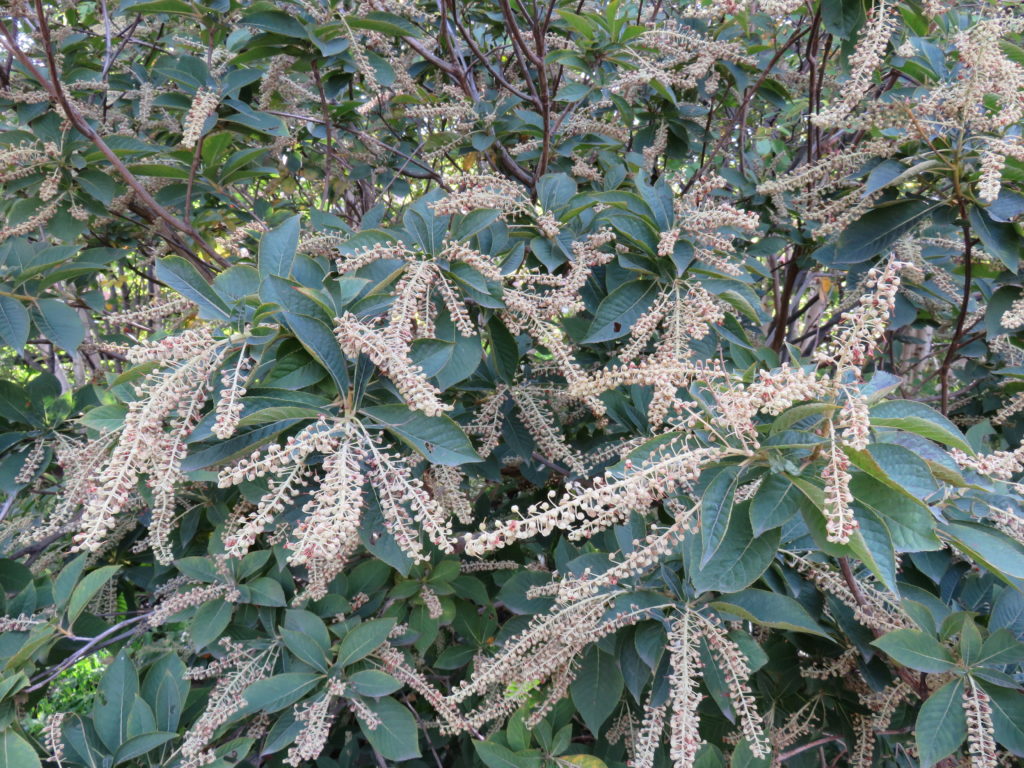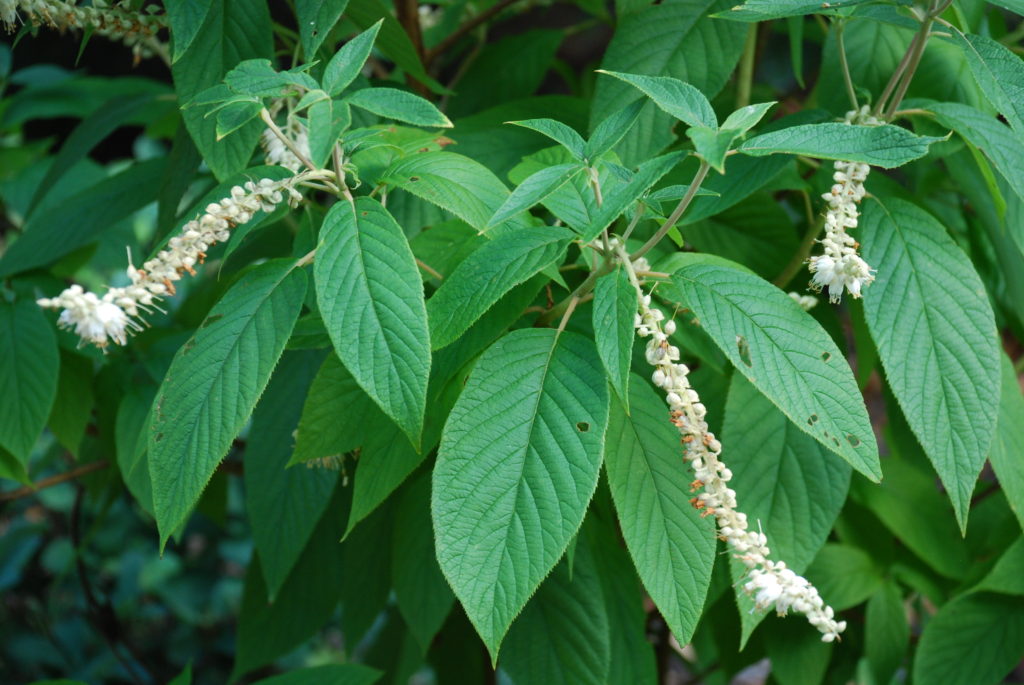
Japanese clethra (Clethra barbinervis) is a large, upright, deciduous shrub or small tree (USDA 5-8). As a small tree it generally grows 10-20 feet tall and features horizontally drooping, terminal racemes (4-6 inches long); the white flowers are pleasantly fragrant. Its bloom period continues over several weeks from mid to late summer. In autumn, its blemish-free, glossy, dark green foliage turns brightly yellow, sometimes taking on reddish tones.
This Asian clethra is larger in all respects than our native sweet pepperbush (Clethra alnifolia). As a multi-branched shrub, it typically grows 8 to 12 feet tall. In early summer, the small ivory flowers appear and later give way to peppercorn-shaped seed capsules borne on the branch tips in fall. The dark brown seed capsules persist through winter.
By mid-autumn the bark begins peeling off in small, irregular patches to expose a cinnamon inner-bark. It is often nicknamed “cinnamon clethra”. It is the plant’s most striking feature. As the tree ages, its polished exfoliating cinnamon bark stands out against newly fallen snow.
Clethras grow in average, medium to wet, well-drained soil in full sun to part shade. Shrubs prefer partial shade and moist, humus-rich, slightly acidic soils. In northerly climes (zone 5), the Asian form should be grown in locations protected from harsh wintry winds and where it may not be reliably hardy.
Cinnamon clethra is a good choice for a woodland garden. Flower spikes are less fragrant than those of C. alnifolia, but attract butterflies and bees. No serious insect or disease problems trouble this tough multi-branched shrub or small tree.
Japanese clethra is rarely sold by local garden centers but is available from on-line specialty nurseries.


 Posted in
Posted in 
